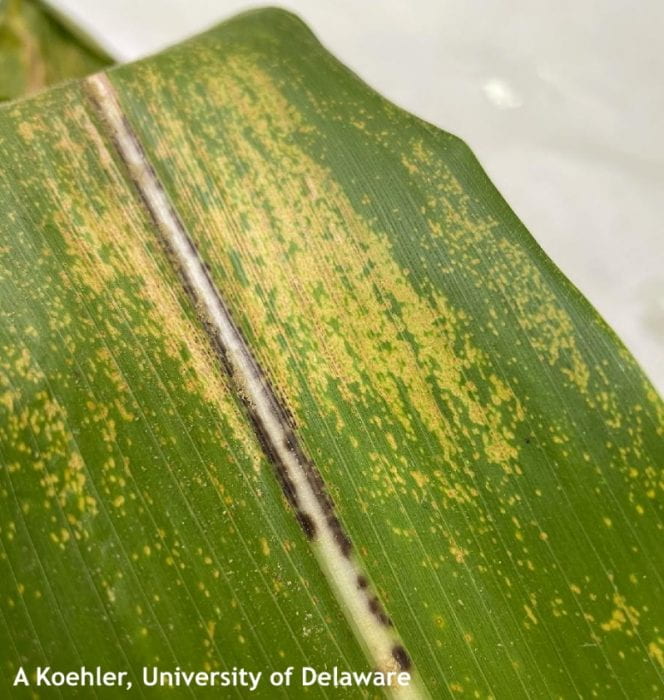Alyssa Koehler, Extension Field Crops Pathologist; akoehler@udel.edu
This week I have received a few samples with Physoderma brown spot. This disease occurs across much of the US, but is not one widely present in our region. I suspect it has been present at low levels in past seasons, but so far, no yield effects have been observed. This is an interesting disease that is caused by Physoderma maydis, a chytridiomycete. This organism produces structures called sporangia that will release motile zoospores under wet conditions. These zoospore swim within the whorl to infect V3-V8 corn resulting in symptoms of yellow streaking or banding across the leaf (Figure 1). The oval spots within streaks are yellow to brown and dark purple to black spots may be visible on the midrib (Figure 2). The sporangia have been shown to survive at least 7 years in the soil, allowing inoculum to build up. Hybrid susceptibility varies, so if you have observed this in your field, you may consider selecting a hybrid with some tolerance to the disease in future seasons. Research in Iowa has shown that heavy precipitation or irrigated fields where wet conditions are maintained may warrant a fungicide at V5-V7. This research has shown that fungicides applied after V8 have no effect on this disease since infection is happening in the whorl. We will monitor expansion of this disease to see if local fungicide trials should be conducted in the future. However, this disease is rarely a threat to yield and shouldn’t normally require treatment.

Figure 1. Yellow streaking of lesions across a leaf from Physoderma Brown Spot

Figure 2. Spotting in the midrib of a corn leaf due to Physoderma Brown Spot
